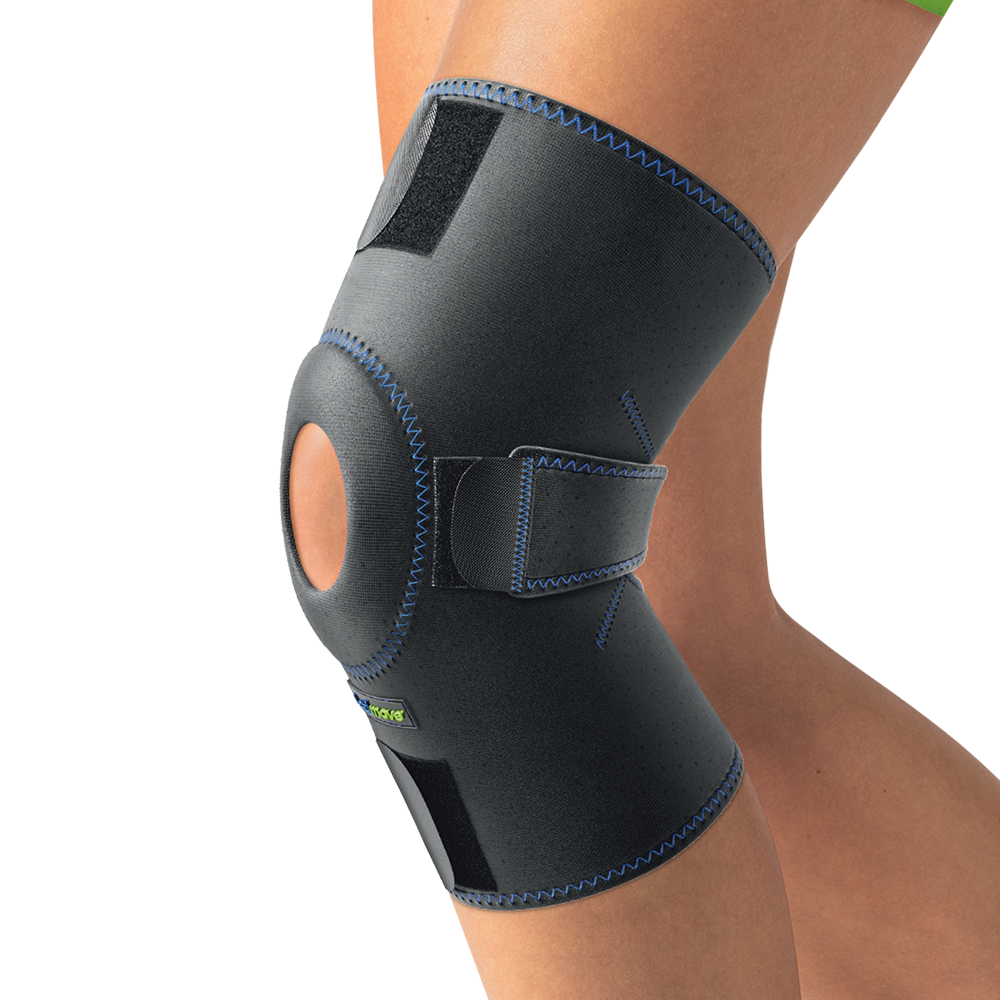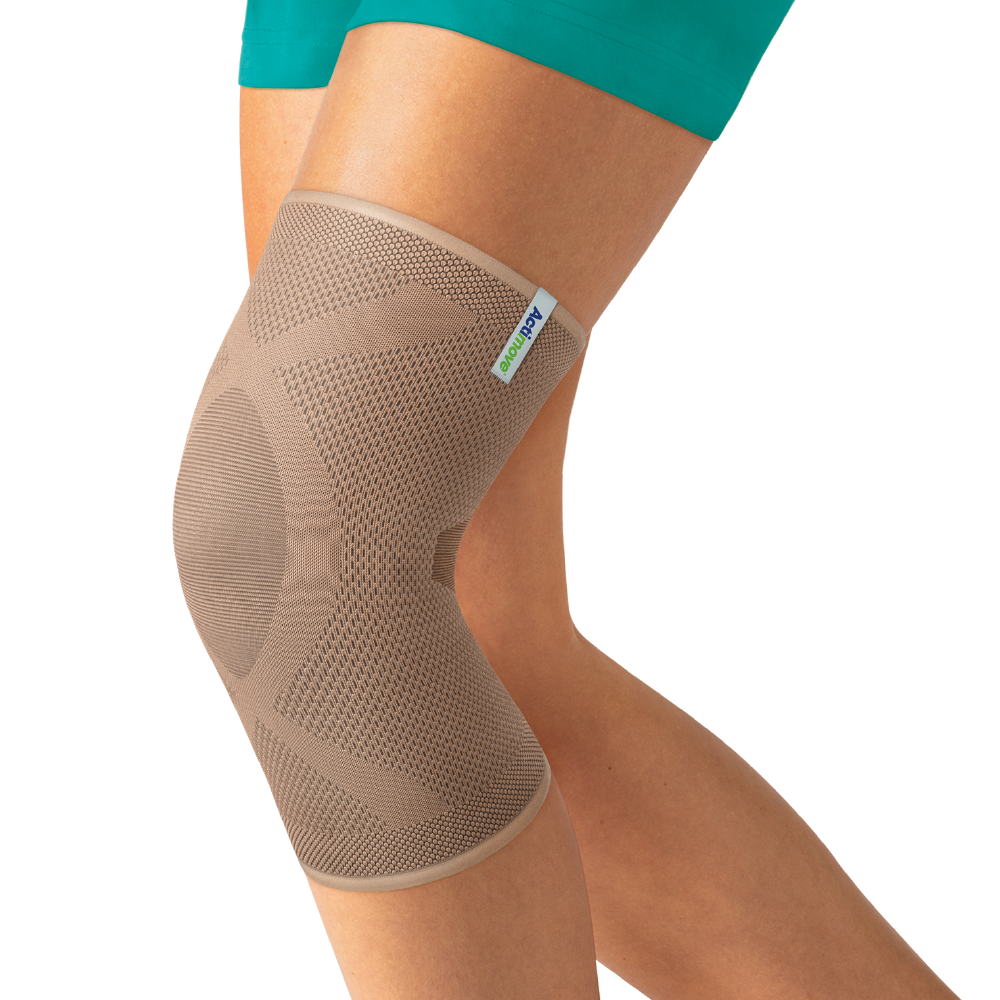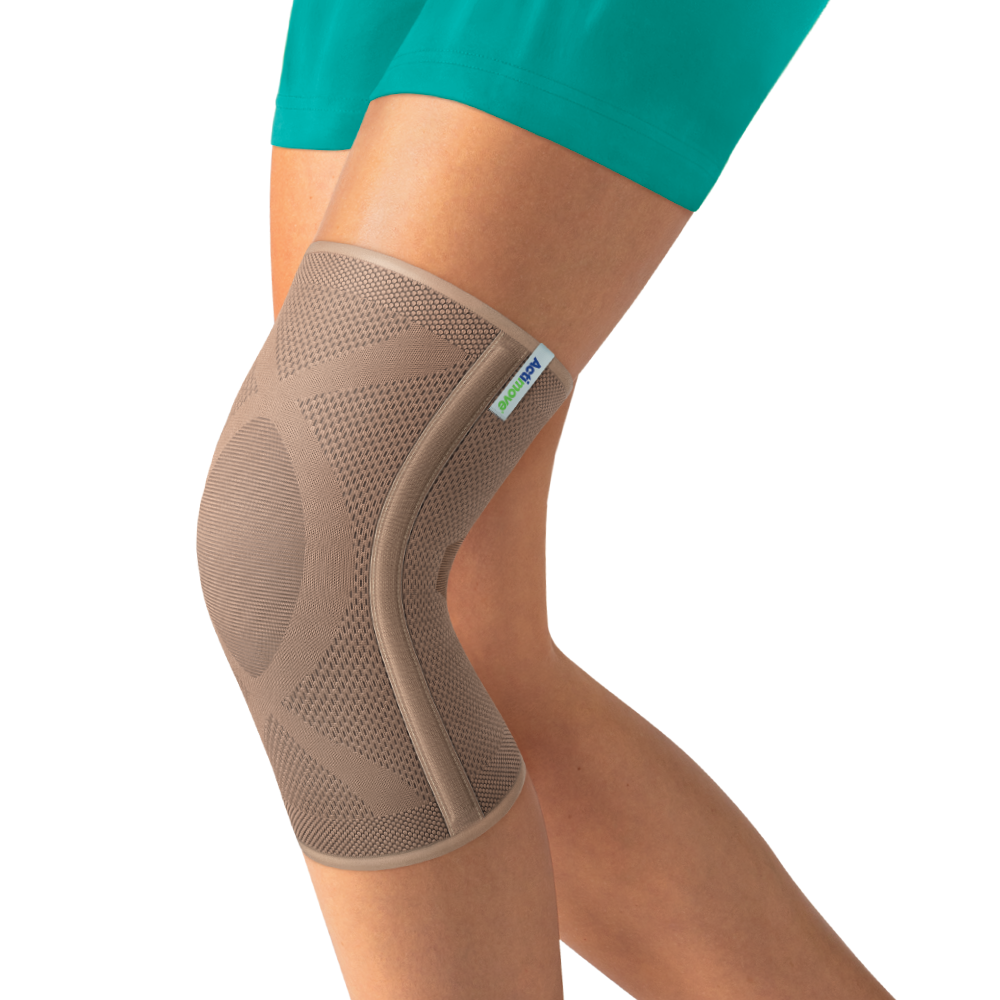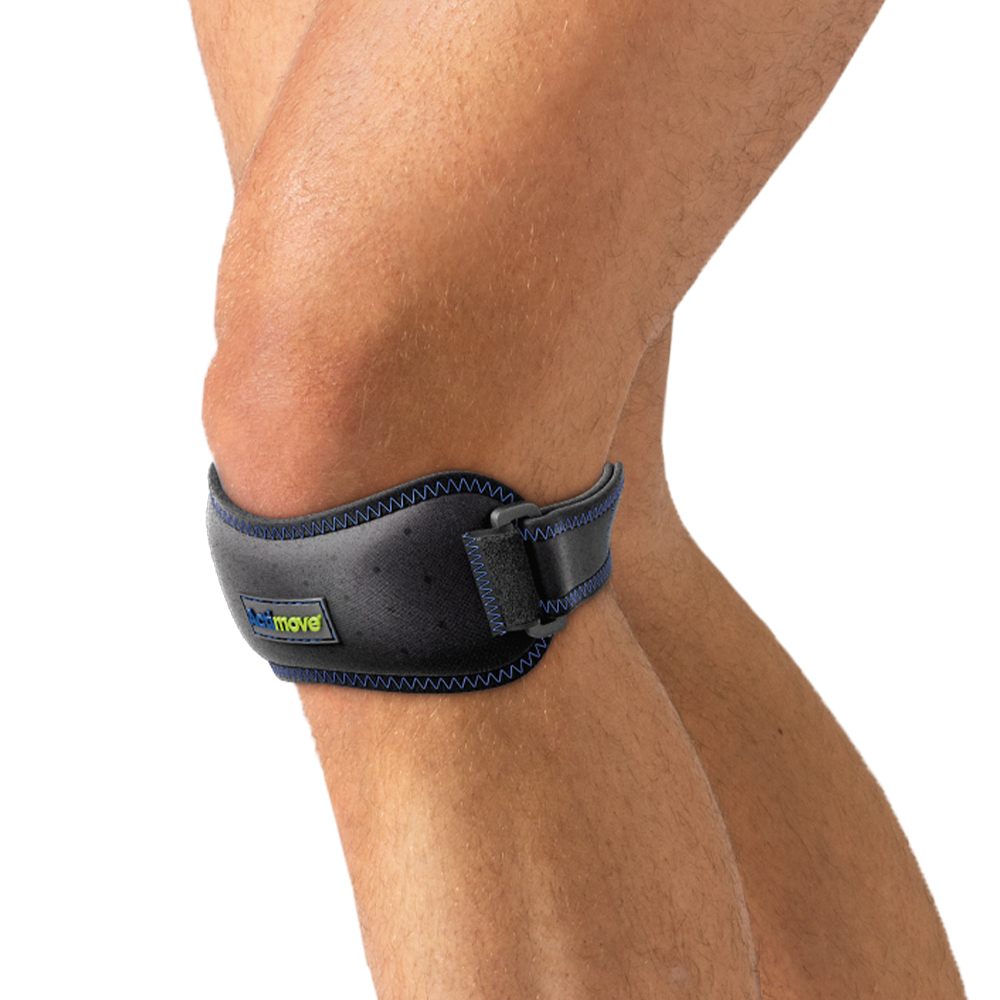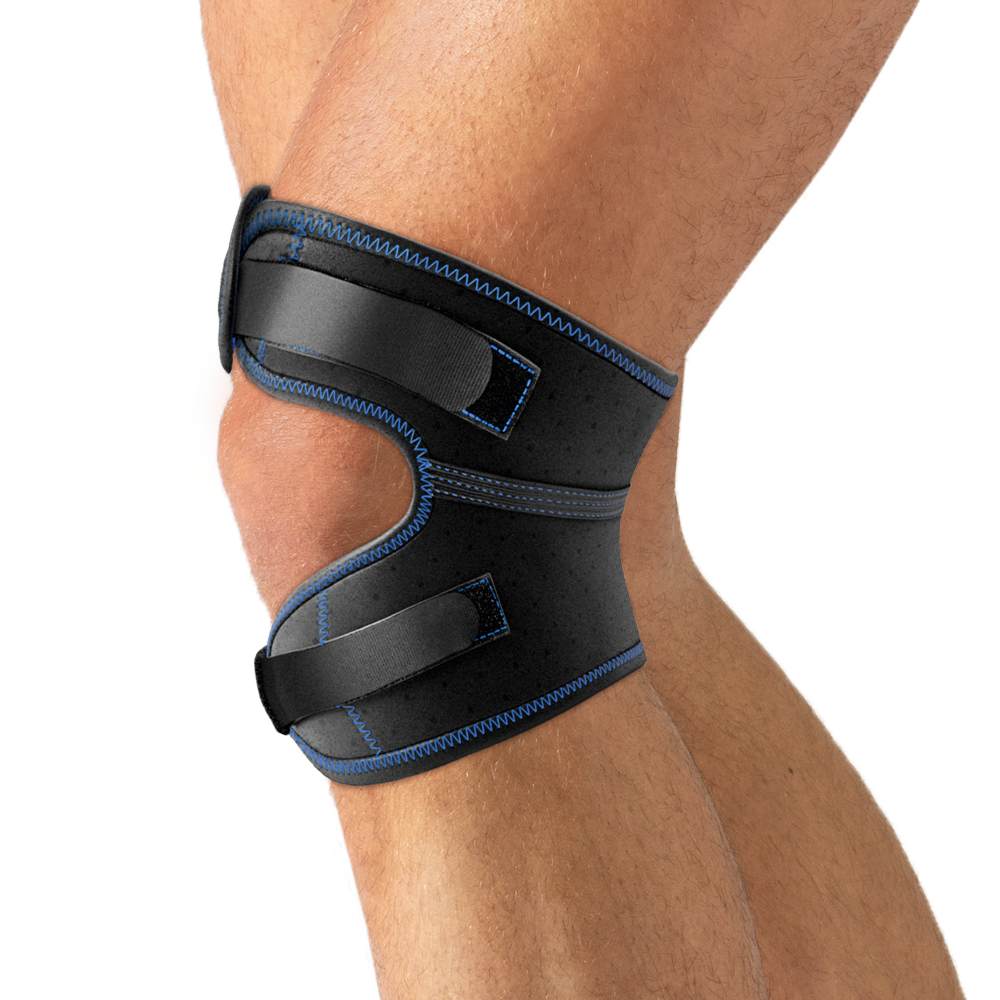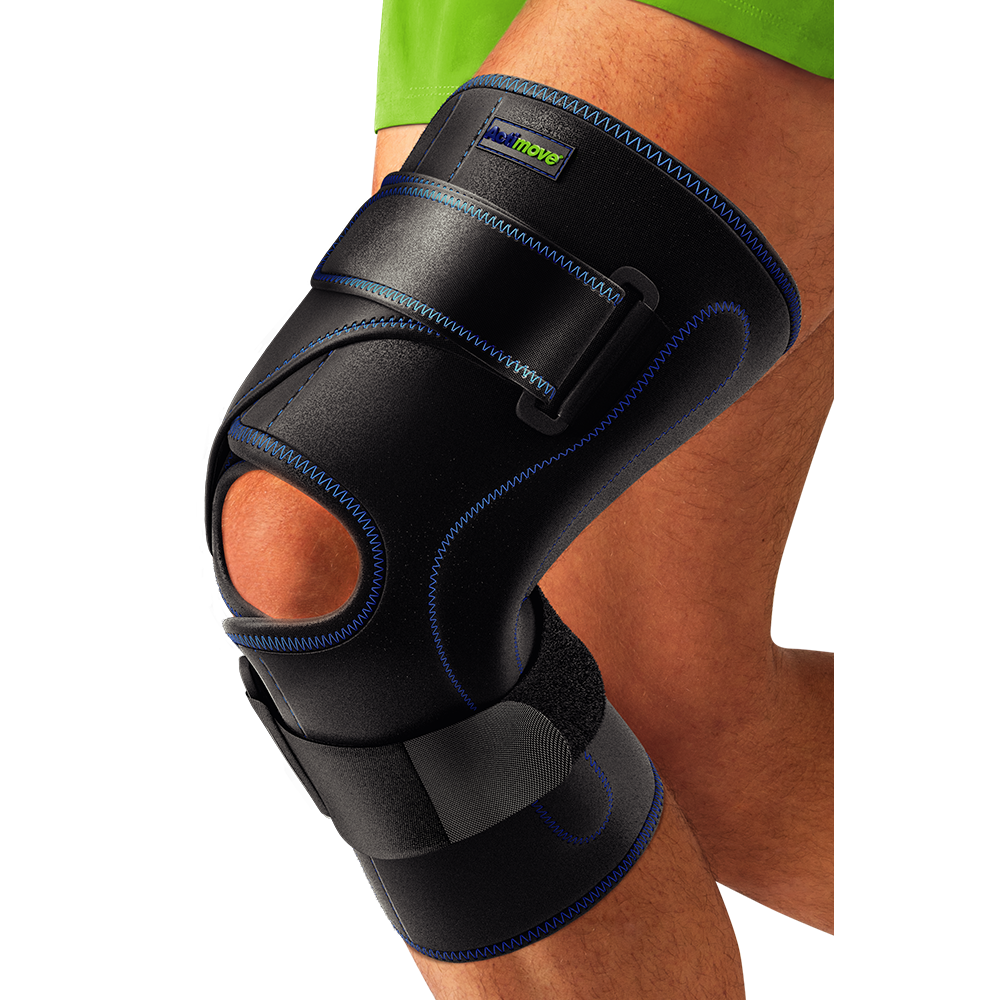

Deciding when to wear a knee support
If you are experiencing knee pain or managing a condition that affects your knees, wearing a support can be a helpful addition to your overall recovery plan. Pain in your knee joint can cause discomfort while walking or standing - wearing a support can help minimise pain during the healing process. Knee supports are usually discreet and can be worn comfortably under most items of clothing. Generally, knee supports are worn to help protect the knee joint while playing sports or during daily activities.
You can ask a doctor or medical professional to help you decide whether a knee support or knee brace is right for your condition. They will also be able to tell you when, and for how long, you should wear the device.
Supports for knee sprains
Knee sprains and strains can happen at any time during sports or an activity. They are usually the result of overstretching, overusing, or twisting the knee awkwardly. Symptoms of a knee sprain include pain, swelling, stiffness and occasionally bruising or discoloration of the skin around the joint.
Supports for chronic knee pain
If you experience chronic knee pain, a device such as Actimove Everyday Knee Support provides firm compression, giving you reliable support for pain management and everyday mobility. Choose between the Closed Patella or the Closed Patella with Stays style depending on your needs.
It includes a soft and smooth Motion-Comfort-Zone at the back of the product for the sensitive area behind the knee.
Knee supports for tendonitis
Tendonitis is when a tendon becomes inflamed after an injury. Sometimes known as patellar tendonitis, this is an injury to the tendon that connects your kneecap (patella) to your shinbone. The patellar tendon works alongside the muscles in your thigh to enable you to extend your knee, so that you can run, jump, and kick. This condition, also known as jumper’s knee, is common in people who play sports such as basketball and volleyball.
- Pain between the kneecap and shin that gets worse with movement
- Tenderness in the affected tendon
- Swelling
- A grating sensation when you move
- A lump on the tendon
- A decreased range of motion
Knee supports for arthritis
Osteoarthritis is the most common form of arthritis that can affect both knees simultaneously. While it can affect people of all ages, it is more common in older people. This degenerative condition causes inflammation and deterioration of the knee joint cartilage, a coating on the ends of bones that acts as a cushion, allowing the knee to bend and straighten smoothly. Symptoms include pain, swelling and stiffness.
Supports for knee ligament and tendon tears
It is possible to tear the soft tissue structures that belong to the knee, including cartilage, ligaments, and tendons. The most common types of knee tear are anterior cruciate ligament or ACL injuries and meniscus tears. These can be caused by injuries when playing sports or games, or from sudden impact injuries.
- Severely limited movement
- Pain when standing
- Instability
- A popping sensation in the knee
Knee stabilisers for patellofemoral pain syndrome
Patellofemoral Pain Syndrome, in short PFPS, is a knee condition that causes pain at the front of the knee around the patellofemoral joint. This is the joint between the kneecap (patella), and the thigh bone.
- Pain at the front of the knee or behind the kneecap
- Pain that increases during activity
- Pain after sitting for long periods of time
- Pain when walking downstairs


